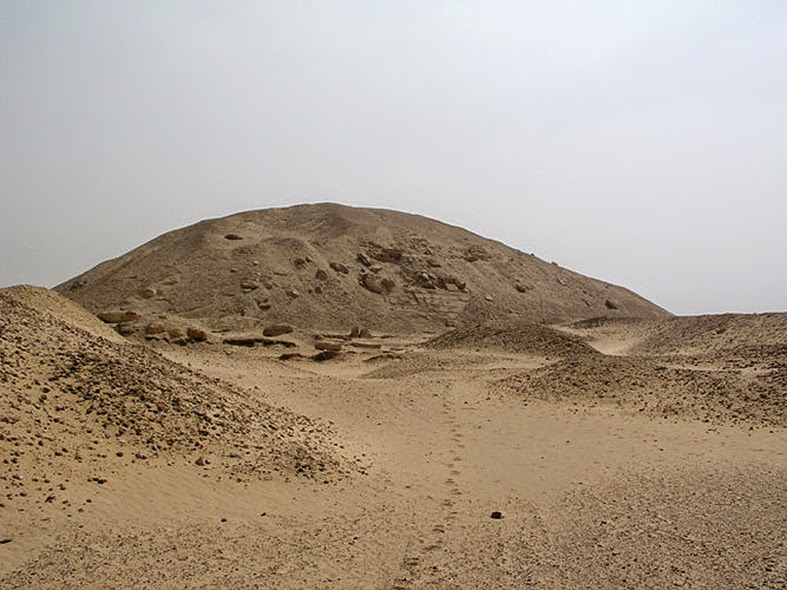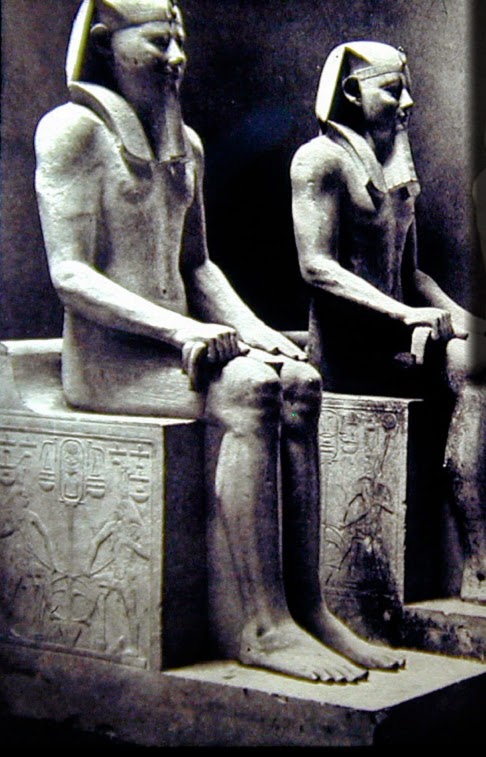Some of the finest examples of sculpture during the Middle Kingdom were at the height of the empire under Pharaoh Senusret III. Senusret III is known for his strikingly somber sculptures. Senusret III is considered to be perhaps the most powerful Egyptian ruler of the dynasty, and led the kingdom to an era of peace and prosperity.
Senusret III is known for his strikingly somber sculptures in which he appears careworn and grave. While many statues portray him as a vigorous young man, others deviate from this standard and illustrate him as mature and aging. This is often interpreted as a portrayal of the burden of power and kingship. Another important innovation in sculpture during the Middle Kingdom was the block statue, which consisted of a man squatting with his knees drawn up to his chest.
During the Middle Kingdom, relief and portrait sculpture captured subtle, individual details that reached new heights of technical perfection. Some of the finest examples of sculpture during this time was at the height of the empire under Pharaoh Senusret III.
Khakhaure Senusret III (also written as Senwosret III or Sesostris III) ruled from 1878 BC to 1839 BC, and was the fifth monarch of the Twelfth Dynasty of the Middle Kingdom. His military campaigns gave rise to an era of peace and economic prosperity that not only reduced the power of regional rulers, but also led to a revival in craftwork, trade, and urban development in the Egyptian kingdom. One of the few kings who were deified and honored with a cult during their own lifetime, he is considered to be perhaps the most powerful Egyptian ruler of the dynasty.
Aside from his accomplishments in architecture and war, Senusret III is known for his strikingly somber sculptures in which he appears careworn and grave. Deviating from the standard way of representing kings, Senusret III and his successor Amenemhat III had themselves portrayed as mature, aging men. This is often interpreted as a portrayal of the burden of power and kingship. That the change in representation was indeed ideological and should not be interpreted as the portrayal of an aging king is shown by the fact that in one single relief, Senusret III was represented as a vigorous young man, following the centuries old tradition, and as a mature aging king.
Another important innovation in sculpture that occurred during the Middle Kingdom was the block statue, which would continue to be popular through to the Ptolemaic age almost 2,000 years later. Block statues consist of a man squatting with his knees drawn up to his chest and his arms folded on top of his knees. Often, these men are wearing a wide cloak that reduces the body of the figure to a simple block-like shape; in some cases the cloak covers the feet completely, and in others the feet are left uncovered. The head of the sculpture contains the most detail.
Senusret III is known for his strikingly somber sculptures in which he appears careworn and grave. While many statues portray him as a vigorous young man, others deviate from this standard and illustrate him as mature and aging. This is often interpreted as a portrayal of the burden of power and kingship. Another important innovation in sculpture during the Middle Kingdom was the block statue, which consisted of a man squatting with his knees drawn up to his chest.
During the Middle Kingdom, relief and portrait sculpture captured subtle, individual details that reached new heights of technical perfection. Some of the finest examples of sculpture during this time was at the height of the empire under Pharaoh Senusret III.
Khakhaure Senusret III (also written as Senwosret III or Sesostris III) ruled from 1878 BC to 1839 BC, and was the fifth monarch of the Twelfth Dynasty of the Middle Kingdom. His military campaigns gave rise to an era of peace and economic prosperity that not only reduced the power of regional rulers, but also led to a revival in craftwork, trade, and urban development in the Egyptian kingdom. One of the few kings who were deified and honored with a cult during their own lifetime, he is considered to be perhaps the most powerful Egyptian ruler of the dynasty.
Aside from his accomplishments in architecture and war, Senusret III is known for his strikingly somber sculptures in which he appears careworn and grave. Deviating from the standard way of representing kings, Senusret III and his successor Amenemhat III had themselves portrayed as mature, aging men. This is often interpreted as a portrayal of the burden of power and kingship. That the change in representation was indeed ideological and should not be interpreted as the portrayal of an aging king is shown by the fact that in one single relief, Senusret III was represented as a vigorous young man, following the centuries old tradition, and as a mature aging king.
Another important innovation in sculpture that occurred during the Middle Kingdom was the block statue, which would continue to be popular through to the Ptolemaic age almost 2,000 years later. Block statues consist of a man squatting with his knees drawn up to his chest and his arms folded on top of his knees. Often, these men are wearing a wide cloak that reduces the body of the figure to a simple block-like shape; in some cases the cloak covers the feet completely, and in others the feet are left uncovered. The head of the sculpture contains the most detail.

















